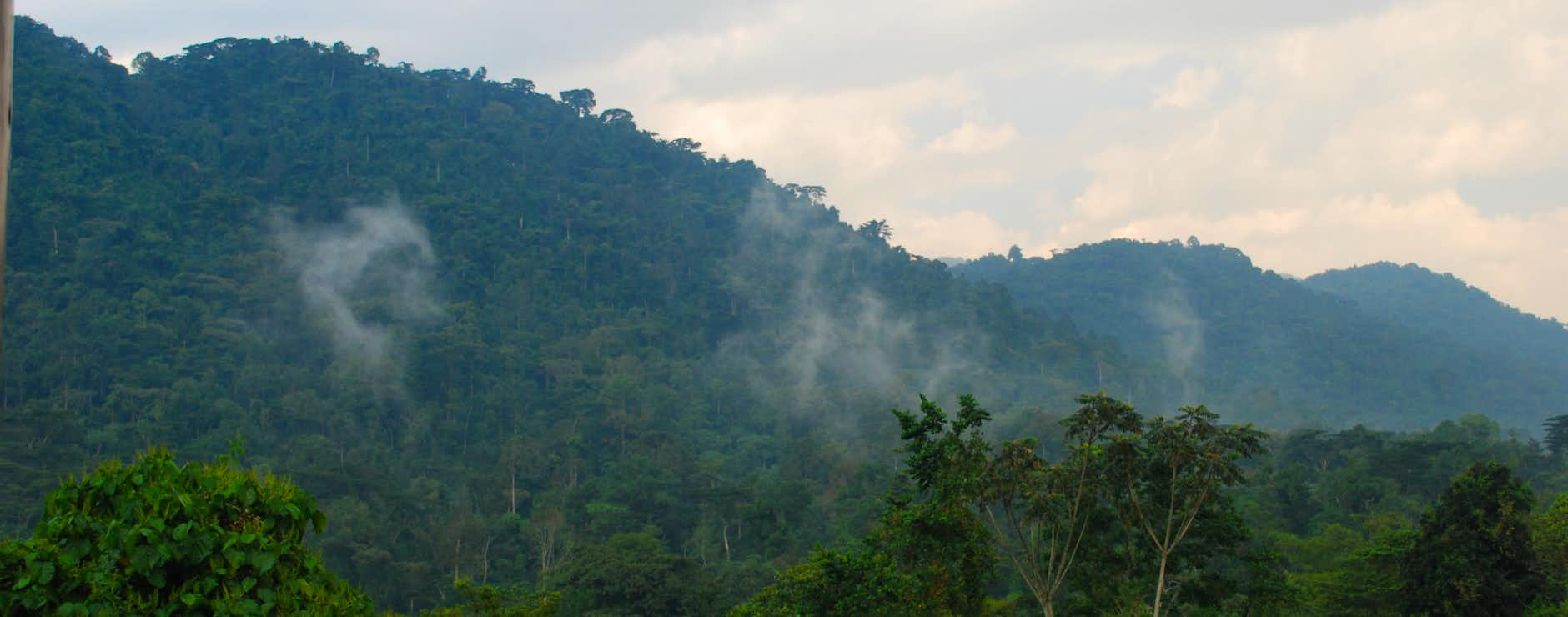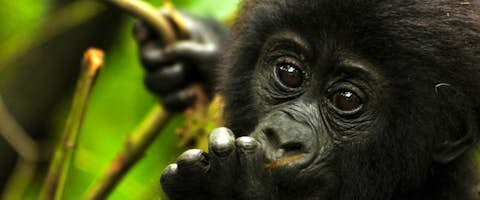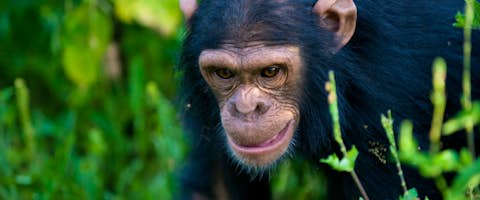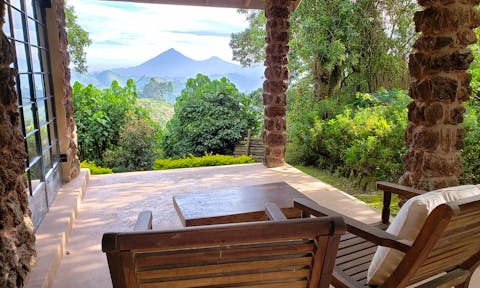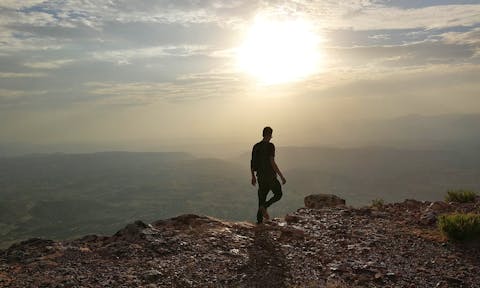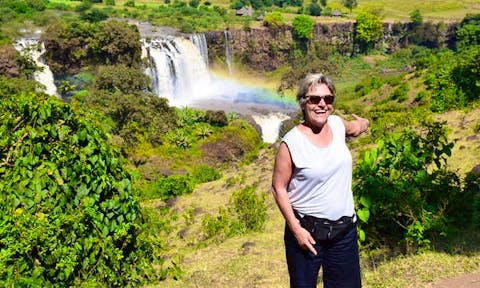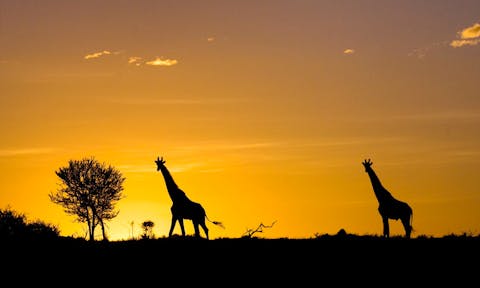When is the best time to visit Uganda?
-
Uganda in January
January is the driest month of the year, roads are clear and skies are blue. This is one of the best months to visit for trekking and any outdoor activities, and photographs promise to showcase the best that Uganda has to offer. Since Uganda sits on the equator, the risk of sudden downpours can't be avoided, but these will be exceptions rather than the norm.
Check out our full guide on visiting Uganda in January.
-
Uganda in February
The dry season continues into February. Conditions are perfect for trekking, hiking, game drives and wildlife tracking.
Boat safaris are great throughout the dry season as the wildlife flock to the waterholes as downpours are less frequent.
Uganda is a wonderful birding destination year round, but the clear conditions make for better sightings and December through February brings a wealth of migratory birds.
Check out our full guide on visiting Uganda in February.
-
Uganda in March
March is the start of the long rainy season in Uganda that runs until May. Downpours can be heavy and persistent, although often occur in late afternoons or overnight.
It's still perfectly possible to enjoy all that Uganda has to offer during this season, including tracking the gorillas and chimpanzees, but the roads become challenging, treks slippery, and the skies overcast with pockets of sunshine illuminating the wilderness throughout the day.
You'll want to bring waterproof clothing and good quality trekking boots.
Gorillas often head to lower, warmer ground in the rainy season which can make sightings easier.
Check out our full guide on visiting Uganda in March.
-
Uganda in April
April is the peak of the rainy season and sees the worst of the rains.
Travelling during this period often means cheaper accommodation. The forests come alive in luscious greens, birds flock, and you'll feel like you're in the beating heart of Uganda's wilderness.
Roads will be torn up by the rains, so expect a challenging drive!
Check out our full guide on visiting Uganda in April.
-
Uganda in May
The final month of the long rainy season. Conditions begin to let up towards the end of the month, but you should still expect heavy rains and tougher roads and treks.
Check out our full guide on visiting Uganda in May.
-
Uganda in June
The start of peak season in Uganda. June is a fantastic month to visit the country. The rains have passed, but their impact can be clearly seen from the outstanding colour of the forests. Skies are blue and the trekking routes have dried.
Peak season of course means gorilla permits are likely to be booked up quickly. If you want to travel during these months, you need to book well in advance.
Check out our full guide on visiting Uganda in June.
-
Uganda in July
The dry season continues and temperatures are cooler across the country. July is typically the driest month in Uganda, although you should be prepared for showers at any time. Another perfect month for exploring Uganda.
Check out our full guide on visiting Uganda in July.
-
Uganda in August
The final month of the dry season, conditions across the country remain perfect. Rainfall is similar to that of early June as the country's short rainy season approaches. For now, skies are blue and access routes easy to traverse.
Check out our full guide on visiting Uganda in August.
-
Uganda in September
The rains are a little more frequent than in the drier June to August, but nothing compared to the long rainy season earlier in the year. Roads are clear and trekking routes not too slippery.
The rains aren't enough for the vegetation to blossom like it does during wetter months, and so animals head for the waterholes which makes sightings easier and more frequent.
Check out our full guide on visiting Uganda in September.
-
Uganda in October
October marks the end of peak season in Uganda and rains begin to pick up, but it's still much drier than the long rainy season from March to May.
Accommodation often drops in price again, but other than that it's very much business as usual.
Check out our full guide on visiting Uganda in October.
-
Uganda in November
November is the second rainy season in Uganda. The rains are less dramatic than those of March to April, but they are severe enough for roads to become tough to traverse and trekking routes a challenge. Some lodges will close in the worst affected regions.
You can still travel in November, just as you can during the long rainy season earlier in the year. You just have to be prepared for showers and greyer skies.
The forests are beautiful, savannah's turn from brown to green, and migratory birds flock to the country. It's wet, but still a wondrous time to visit this amazing country.
Check out our full guide on visiting Uganda in November.
-
Uganda in December
As the seasons come back around, the rains calm and the dry season returns.
December is the start of the dry season that lasts until February (and comes back around again from June to September). Some of the short rains linger into December, but these are usually unremarkable and won't distract you from the gorillas and chimps.
The wildlife returns to the waterholes and access is great across the country. What's more, Christmas is a big celebration in Uganda, so the country is buzzing with festivities.
Check out our full guide on visiting Uganda in December.

Brilliant says
Temperatures in Uganda are very consistent throughout the year. The major factor that determines the temperature is the altitude. Warm days in the lowlands sit between 25-30°C, with highland areas averaging 15-20°C. Early mornings, evenings, and nights in the highlands can get quite cold, and since you're on the equator, you have to be ready for showers no matter when you're travelling.
Our most popular trips
The tours below showcase just some of what is possible. Use these itineraries as starting points, or to draw inspiration. Then get in touch, and let our expert team help craft the perfect itinerary for you.
Watch our Guide to Uganda
Thinking about visiting Uganda?
Listen
We'll spend some time listening to your aspirations, then discuss the kind of experience that might suit you.
Match
Next we'll discuss the options, shortlist the best trips for you and present you our impartial recommendations.
Reserve
We'll place a 24 hour hold on your preferred option - without obligation - whilst we talk through the details.
Get in touch and we can help you understand your options, design an itinerary that's right for you, and then get you set up and ready to go.
+1 315 645 2889

